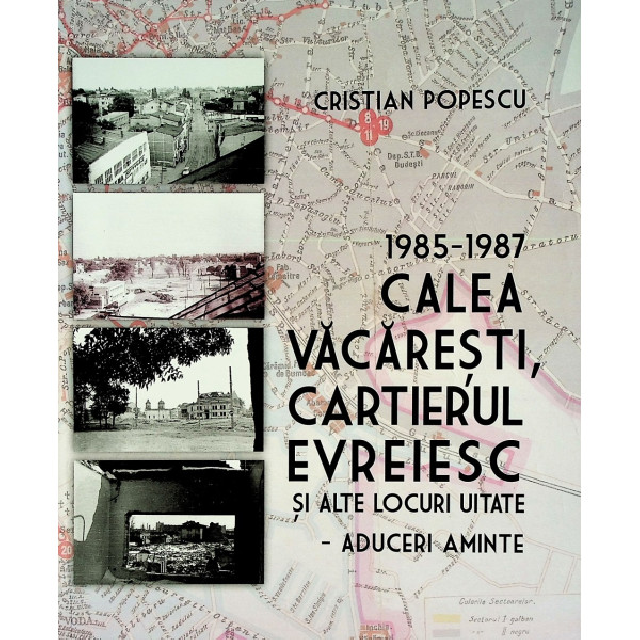The story of Calea Văcărești
Bucharest has a number of old roads forming the skeleton which the largest Romanian city has been built on, in the past 500 years.

Steliu Lambru, 29.07.2023, 14:31
Bucharest has a number of old roads forming the skeleton which the largest Romanian city has been built on, in the past 500 years. These old roads can be easily traced after the word “cale, which means “road, included in their name. A few examples would be Calea Victoriei, today the Victory Boulevard, Calea Calarasilor, Calea Mosilor, Calea Dudesti, Calea Floreasca and so on. The best known of them, however, is Calea Victoriei, one of Bucharests main north to south roads. The other old roads were equally important, Calea Vacaresti being one of them.
The starting point of Calea Vacaresti was not far from the current Union Square, in the oldest neighborhood of the city, known as Mahalaua Popescului (Popescului slum). Today the area is knows as the Jewish Neighborhood, due to the fact that many Jews used to live there. It was the location of the so-called Sephardic Bucharest, with synagogues and houses of the middle class. From the Union Square, Calea Vacaresti follows a south-eastern trajectory, along Dambovita river, towards Berceni neighborhood. Its name is connected to the Vacaresti Monastery, demolished in 1987, which was located in the south of Bucharest.
Calea Vacaresti, just like the entire city of Bucharest, underwent periods of transformation starting the second half of the 19th century, which coincided with the modernization of other neighborhoods and main roads. One such period, perhaps the most traumatic, was the 1980s, when Nicolae Ceausescus systematization programme changed it completely. Cristian Popescu, the author of the volume 1985-1987 Calea Văcărești, the Jewish Neighborhood and Other Forgotten Places, published a photo album of that period.
Historian Anca Tudorancea, a researcher with the Wilhelm Filderman, Jewish History Centre in Romania has also studied the area: That area was in fact Mahalaua Popescului, which today is marked on Google as the Jewish neighborhood. This became my research topic and still is. I have been researching the area for 20 years and I can still find new things about it. The conclusion could be that this digital mark is somehow simplistic, because there was not only one Jewish neighborhood. It is, in fact, the oldest inhabited area here, the centre of the neighborhood, where most temples and pieces of streets have been found. They had been there 20 years ago when I started my research at the Centre for the Study of Jewish History in Romania.
Calea Văcărești of today is difficult to recognize by a traveler of by a young Bucharester. Nevertheless, Cristian Popescus photo album helps us localize on todays street the frame of what had been lost in the 1980s: Many times, the names of the streets were preserved, but the streets themselves no longer exist. Only pieces of them have been left. For Calea Vacaresti at least, Cristian Popescus book is visual archaeology. What was there once no longer exists and roads are different from what they used to be. More than that, not only houses on certain streets disappeared, but also their inhabitants. The book makes a partially sentimental evocation of the streets and their inhabitants.
Calea Văcăreștilor can be today reconstituted with the help of Cristian Popescus book. There are also other writings that help us explore the area, though some of them have been distorted by ideology as Anca Tudorancea said. When we say Calea Văcărești, the first thought that comes to mind is literature. The name of the street itself has been turned into a literary stereotype. A book about it was written by Isac Peltz, who dedicated it to the memory of his mother. The book, which evokes a very poor society, was tolerated during communism because it enjoyed public success. No book that talked about the well-off people in the Jewish neighborhood would have been tolerated. But a book about the poor people was even encouraged, without having great literary importance. Some readers were shocked by the fact that such a world existed close to the center – a world of tailors and small merchants, of people who barely survived one day to the other, and which the author knew very well. (EE)






























